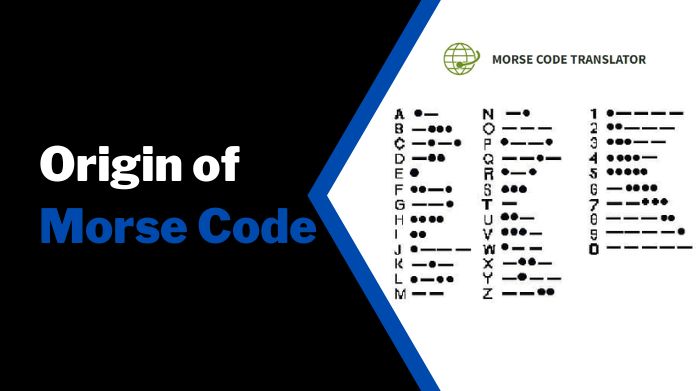Morse Code, a system of communication based on a series of dots and dashes, is not just a relic of the past; it is a pivotal development in the history of communication technology that forever altered how we transmit information.
In this article, we will explore the origins of Morse Code and how it revolutionized the world of communication.
The Origin of Morse Code

Going for the origin of Morse Code, named after its co-inventor Samuel Morse, emerged in the 1830s as a solution to the need for rapid long-distance communication.
Before its development, communication over extended distances could have been much smoother. Morse Code changed that, offering a systematic and efficient way to convey messages quickly, especially in contexts like telegraphy and radio communication.
The invention of the Morse Code is closely associated with the telegraph and its co-inventors, Samuel Morse and Alfred Vail.
Samuel Morse, primarily known as a painter, initially conceived the telegraph idea. However, the introduction of the Morse Code made the telegraph practical for widespread use.
The Language of Dots and Dashes
At its core, Morse Code utilizes two fundamental symbols: dots (.) and dashes (-).
These symbols represent letters, numbers, and various other symbols. The duration of a dot serves as the basic unit of time in Morse Code, with a dash typically lasting three times as long.
The space between symbols is equivalent to one dot’s duration, the space between letters generally is three dots, and the space between words is seven dots.
Here’s a reference for some commonly used Morse Code symbols:
A .- B -… C -.-. D -..
E . F ..-. G –. H ….
I .. J .— K -.- L .-..
M — N -. O — P .–.
Q –.- R .-. S … T –
U ..- V …- W .– X -..-
Y -.– Z –.. 0 —– 1 .—-
2 ..— 3 …– 4 ….- 5 …..
6 -…. 7 –… 8 —.. 9 —-.
The unique combination of dots and dashes allows for efficient transmission of messages once the Morse Code operator becomes proficient in interpreting and sending signals.
The Impact of Morse Code
Origin of Morse Code brought about a sea change in communication across several domains. Here are some of its key impacts:
1. Revolutionizing Telegraphy
Origin of Morse Code transformed Telegraphy, allowing messages to be transmitted over long distances in a fraction of its previous time.
This was a significant development for industries like journalism, business, and government, enabling rapid dissemination of information.
2. Vital in Maritime Communication
Morse Code was crucial for maritime communication, particularly in distress signals. The internationally recognized SOS ( …—… ) distress signal, made up of three short signals, three long signals, and three short signals, was essential for saving lives at sea.
3. Military and Aviation
The Morse Code was vital for transmitting important messages, coordinates, and distress signals in the military and aviation sectors. It played a critical role during war and emergencies when communication was essential.
4. Amateur Radio
Amateur radio operators, often known as “hams,” continue to use Morse Code. It’s considered a valuable skill among radio enthusiasts, allowing them to communicate over long distances when other forms of communication may be unreliable.
5. Early Space Exploration
Morse Code was even employed in early space missions. Astronauts used it to communicate with mission control on Earth when radio signals were weak or disrupted. It was a backup means of communication in the hostile environment of space.
The Legacy of Morse Code
Morse Code lost its practical significance in everyday communication with the advent of more modern communication technologies, such as the telephone, internet, and digital messaging.
In 1999, the International Telecommunication Union (ITU) officially removed the requirement for mariners to be proficient in Morse Code.
However, Morse Code’s legacy endures. It represents an essential chapter in the history of communication technology and a testament to human ingenuity.
In recent years, it has experienced a resurgence in popularity among hobbyists, preserving its unique place in communication history.
Takeaway
In conclusion, the Morse Code is a pivotal invention that forever changed the communication landscape. It transformed long-distance communication, enabled rapid transmission of information, and played a critical role in various industries, from journalism to aviation.
Its legacy lives on as a symbol of human innovation and the enduring importance of effective communication.
